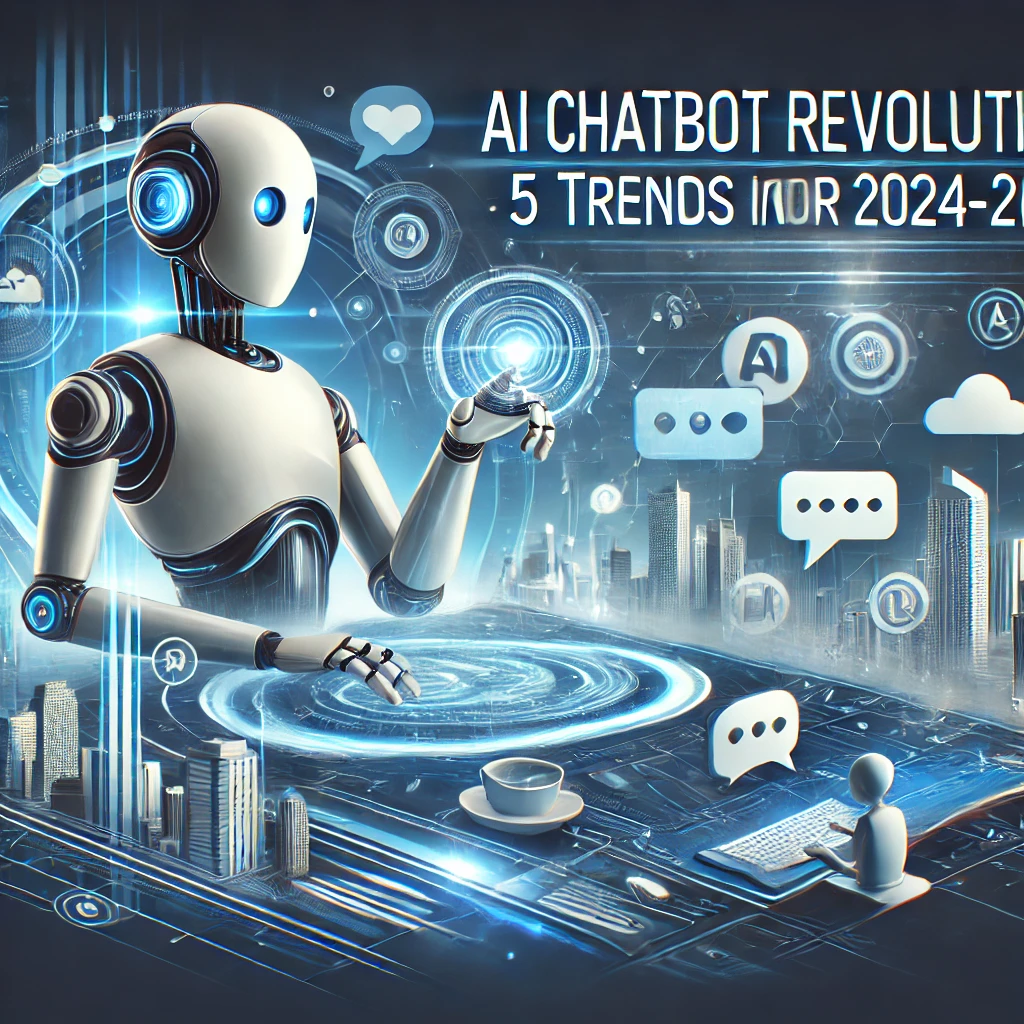Artificial Intelligence (AI) chatbots have evolved significantly over the past few years. Once limited to basic customer service tasks, these bots have now become integral to businesses, social interactions, and even personal assistance. As we look toward 2024 and beyond, there are some major trends that are set to redefine how we interact with AI chatbots. Understanding these trends is essential for businesses and individuals alike as chatbots become more sophisticated and widespread.
Let’s explore five key trends that are shaping the future of AI chatbots for 2024-25.
1. Contextual Awareness: Moving Beyond Simple Responses
AI chatbots have progressed from responding to individual keywords to now understanding the context and flow of a conversation. The ability to comprehend a user’s intent is becoming more refined, making interactions feel more natural and less mechanical.
For example, I’ve observed that modern chatbots can follow complex queries, linking one question to the next without requiring repeated clarifications. A user might say, “I need to change my flight” followed by “Is there a fee?” without explicitly mentioning the flight again. In comparison to older bots that would struggle with such continuity, the new generation can handle these subtleties with ease.
This contextual awareness not only makes conversations smoother but also allows chatbots to anticipate a user’s needs. They can provide personalized suggestions based on previous interactions, enhancing user satisfaction and making the experience more engaging.
2. Emotional Intelligence: Chatbots That Can Read the Room
Another key trend is the integration of emotional intelligence in AI chatbots. While these bots don’t “feel” emotions themselves, they are now equipped to recognize and respond to the emotional tone of a conversation. This development is crucial, especially in customer service scenarios where emotions often run high.
I’ve seen how bots can adjust their tone and responses based on whether the user is happy, frustrated, or confused. For instance, a chatbot might escalate a complaint to a human representative more quickly if it detects a user’s frustration. In this way, emotional intelligence allows bots to better serve users, not only solving problems but also reducing negative experiences.
In particular, this emotional adaptability is becoming more common in healthcare and therapy chatbots, where handling sensitive conversations is crucial. These AI systems, through their ability to read emotions, provide support in ways that feel caring and attentive, despite their lack of human consciousness.
3. Other Personalized Interactions
As AI technology grows more sophisticated, it’s not just business interactions that are benefiting. There’s an increasing demand for personalization in more intimate aspects of life as well, including the rise of AI sexting bots.
This development is part of a broader trend where AI chatbots are becoming more embedded in private and personal spaces. These interactions, while raising ethical questions, also illustrate the expanding role of AI in day-to-day life. Whether in relationships, healthcare, or companionship, AI bots are being designed to adapt to a range of personal needs.
In comparison, chatbots are also being used for mental health support, providing a judgment-free zone for people to express their thoughts and feelings.
4. Voice Integration: Chatbots That Speak Our Language
Voice-enabled AI chatbots are becoming increasingly popular. Voice interaction adds a layer of convenience and accessibility that text-based chatbots simply can’t match.
In the same way, chatbots are evolving to handle more complex verbal instructions. Voice-enabled bots can understand accents, conversational pauses, and even background noise more effectively than ever before. As a result, they are able to provide a smoother, more natural interaction for users.
Despite some challenges—like processing multiple voices or navigating very noisy environments—the future of voice AI looks promising. Businesses that integrate voice chatbots can offer a more immersive experience, particularly for customers who prefer speaking to typing.
5. AI-Powered Multitasking: Handling More in One Go
One of the most impressive capabilities of modern AI chatbots is their ability to multitask efficiently. I’ve seen how chatbots are no longer limited to a single task at a time. Instead, they can manage multiple requests in one conversation. A chatbot can help a customer resolve a billing issue while simultaneously offering product recommendations or processing a new order.
This multitasking ability is especially useful in industries where customers have varied needs in a single session, such as banking or e-commerce. For example, a customer might want to check their account balance, ask about loan options, and inquire about a recent transaction—all in one conversation. Today’s AI chatbots can handle this complexity without missing a beat.
Moreover, these chatbots are now able to collaborate with human agents more seamlessly. This collaboration makes the entire process faster and more efficient for businesses and their customers.
Looking Forward: What’s Next for AI Chatbots?
As we move further into 2024 and beyond, the landscape of AI chatbots will continue to evolve in ways that might surprise us. I anticipate that chatbots will not only become more contextually aware and emotionally intelligent but also increasingly integrated into every aspect of our lives. From personal interactions to business transactions, AI chatbots are set to play a larger role than ever before.
One of the areas where chatbots have the potential to make a significant impact is in accessibility. Similarly, multilingual bots could bridge communication gaps, allowing businesses to serve customers around the world more effectively.
In addition, the ethical use of AI is likely to come under more scrutiny. As chatbots are increasingly used in sensitive conversations—whether in healthcare, finance, or personal interactions—there will be a need for clear guidelines on privacy and data usage. How we manage these issues will shape the future of AI chatbots and their role in our lives.
Conclusion
The AI chatbot revolution is well underway, and the trends shaping this technology in 2024-25 are pushing the boundaries of what’s possible. From improved contextual understanding and emotional intelligence to specialized applications like AI sexting, chatbots are becoming more embedded in our lives than ever before. Voice integration and multitasking are further enhancing their functionality, making them indispensable tools in both personal and professional spaces.
As AI continues to advance, it’s clear that chatbots will play an even more significant role in how we interact with technology. Whether helping customers, providing emotional support, or assisting in everyday tasks, these bots are transforming the way we engage with the digital world. The future of AI chatbots is not just about automation but about creating more meaningful, personalized, and efficient experiences for users.




